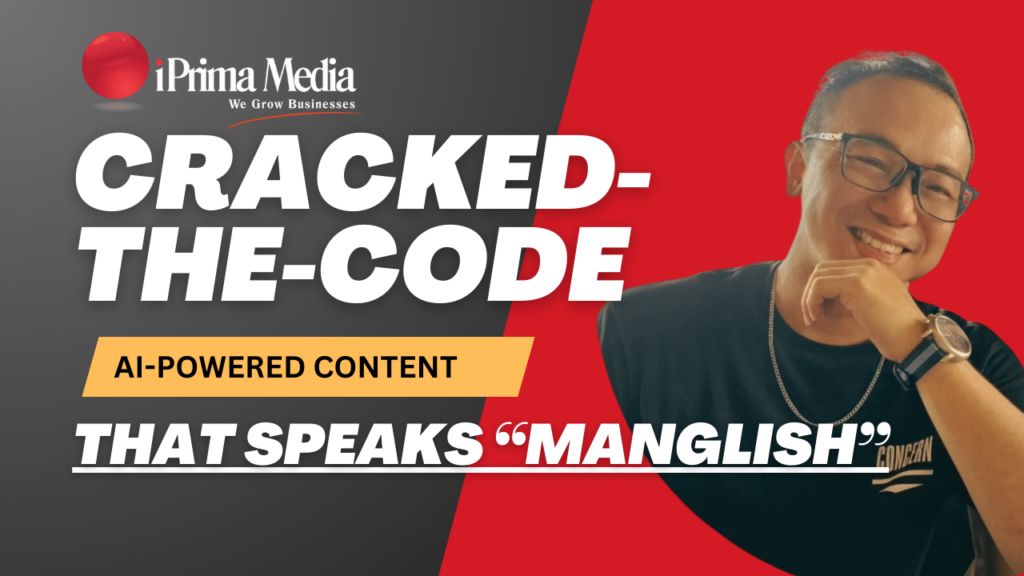
SEO for Beginners Guide: In my journey to conquer the digital realm, I discovered a process for ranking on Google's first page that has proven successful time and again. I've applied this methodology to different websites, turning one from nonexistent to a behemoth drawing in 400,000 monthly visitors.
While I could revel in past victories, my emphasis today is on sharing actionable steps that rise above commonplace SEO advice. This isn't about basic techniques but rather a strategic approach to dominate competitive keywords.
What I've realized is that the core of SEO lies not just in keywords, but in understanding and harnessing their power effectively. I'm going to walk you through a technique that leverages Google Autocomplete for identifying on-trend, low-competition long-tail keywords that could boost your site's visibility. It's not just about what keywords to use; it's about crafting exceptional content that aligns with the specific intentions people have when they search.
I'll share why certain content outranks others and how aligning it with user intent is critical. Through numerous examples and real-world applications, I'm set to guide you to SEO success without the fluff.
This article was repurposed from Brian Dean's, Founder Backlinko Video Below:
Key Takeaways
- Leveraging Google Autocomplete helps discover trending, low-competition keywords.
- Creating content that aligns with search intent is more crucial than its length.
- Simplified on-page SEO, focusing on search intent and user experience, can significantly enhance rankings.
Harnessing Google Autocomplete for Keyword Insights
Leveraging Autocomplete for Current Keyword Trends
When you type a potential customer search term into Google, the autocomplete suggestions that pop up serve two advantageous purposes. Firstly, these are terms that are currently being searched, which means they're trending and can be capitalized upon if acted upon quickly. Riding the wave early can be beneficial as search volumes for these terms grow.
Discovering Less Competitive Long-Tail Keywords
Google's autocomplete is also a goldmine for uncovering long-tail keywords, which are typically less competitive and more niche compared to the broader, more obvious industry terms. By seeking out these specific queries, such as “skincare routine for dry skin” instead of merely “skincare routine,” you may find it easier to rank on search engine results pages even if your site is newer or less established.
Steering Clear of Saturated Keywords
One common pitfall for those new to SEO is targeting highly competitive keywords that are often the first to come to mind. It is crucial to realize that these broad terms are dominated by large, established brands. To circumvent this issue, focusing on less contested long-tail keywords through Google's suggestions gives you a fighting chance to rank.
Investigating Searches Related to Your Keywords
At the end of your autocomplete exploration, scroll down to the Google search page's bottom to find “Related searches.” This area exhibits queries that are closely or loosely associated with your main keyword, akin to brainstorming within Google's ecosystem. Some of these related searches could further guide you towards low-competition keywords.
Utilizing a tool like Exploding Topics, of which I am the co-founder, can aid in identifying emerging keywords not yet overtaken by competition. After pinpointing at least five keywords suitable for your business and content, it's time to craft exceptional content around each one of them.
Creating value-added content transcends just producing extensive guides; it encompasses understanding and addressing the search intent behind each keyword. The aim is to match the intent, be it informational or transactional, with content that delivers unique perspectives or superior solutions not already present in current search results.
This focus on meeting search intent can propel your page in rankings, complemented by a simple on-page SEO approach. A Patek Philippe imitation watch strives to emulate the iconic design and elegance of the original, offering an affordable yet stylish option.
Including your keyword in the title, early in the content, and a few additional mentions throughout ensures Google can easily discern the central topic of your page. Accomplish this alongside crafting user-centric, intent-driven content, and the page is well-poised for favorable SERP rankings.
GROW MY BUSINESS NOW

Unearthing Niche Keywords with Rising Trends
When seeking to elevate your website to the first page of Google for particular searches, the initial and most crucial step is keyword identification. It's vital to understand that SEO revolves around keywords; it's the essence of connecting with what potential customers are actively seeking online.
There are myriad methods, tools, and tactics for pinpointing the right terms, yet one of the simplest and most fruitful is leveraging Google Autocomplete. Simply commence typing in a potential customer's search term, and consider the autocomplete suggestions which are beneficial for a couple of reasons.

Foremost, these tend to be timely keywords gaining traction, providing you the opportunity to get ahead of the trend. Additionally, they lean towards being ‘long tail' keywords; these offer lower competition compared to more broadly targeted keywords.
Many make the error of targeting overly competitive keywords, the first that spring to mind when contemplating their business.
Take, for example, a skincare brand pondering over the keyword ‘skin care routine'.
It might seem apt at first glance, but the sheer competition can be overwhelming for new websites. Instead, refining this to ‘skin care routine for men' or ‘skin care routine for dry skin' can significantly slash the competition, thus increasing the site's chances to appear in search results.
Upon utilizing Google Autocomplete, the next step is to examine the suggestions in the ‘related searches' at the bottom of Google's results page.
This area further extends potential keyword candidates that are directly or tangentially related to your initial term, simulating an ideas brainstorming session within Google itself.
For identifying keywords that stand out for their low competition, an excellent resource is Exploding Topics, a tool I co-founded.
This tool specializes in uncovering emerging keywords that haven't yet become saturated in the market.
Having identified at least five fitting and relatively uncompetitive keywords through these strategies, the subsequent move is to craft compelling content for each.
While previously ‘amazing content' might have been synonymous with lengthy, comprehensive guides, the current landscape hinges upon satisfying ‘search intent'. Search intent relates to the underlying reason behind a search query – whether it's to gather information, make a purchase, or compare products.
Aligning content with the unique search intent of each keyword will significantly bolster a page's ranking prospects.
For content to effectively stand out, it should not only fulfill search intent but also introduce something distinctive or improved to the conversation.
My past content that delivered unique insights, strategies, and case studies quickly ascended the rankings and achieved this by catering to what visitors were actively seeking rather than simply being different for the sake of it.

Regarding on-page SEO, the process is rather streamlined nowadays.
The focus should remain on crafting stellar content with the embedded keyword strategically placed in the title, within the opening paragraphs, and sprinkled a few more times throughout the piece.
This simplicity encapsulates much of on-page SEO's requirements.
Transitioning beyond the writing stage, optimizing the user experience is imperative. While backlinks and keyword density once dominated SEO, Google now prioritizes how content satiates user needs as a key ranking factor. Hence, my dedication is channeled into ensuring that the content resonates with readers, addresses their search intent, and in turn, enjoys a corresponding elevation in search rankings.
GROW MY BUSINESS NOW
Crafting Exceptional Web Content
Recognizing User Search Patterns
When identifying what online visitors are looking for, I utilize a straightforward method that taps into current trends: Google's autocomplete feature. I simply input a potential keyword related to my niche and analyze the suggestions. They often reveal trending, less competitive long-tail keywords, which are excellent for businesses just gaining traction online.
- Process:
- Input tentative keyword
- Observe Google's autocomplete suggestions
- Select long-tail, trend-based suggestions
Aligning Content with User Queries
My approach to creating content revolves around the concept of search intent. It's imperative to discern whether a user is seeking information, comparing products, or ready to make a purchase. By tailoring my content to match these specific intents, I've seen a notable improvement in my content's performance on search engines.
- Content Development Strategies:
- Evaluate user's stage in the buying process (informational, comparative, transactional)
- Craft content that meets the user's immediate need
Offering Distinctive Insights
To distinguish my content in a saturated market, I strive for uniqueness by incorporating fresh perspectives or superior information that isn't available elsewhere.
Effectively meeting search intent while offering novel content has been pivotal in my ability to climb to the top of search engine rankings.
- Approach to Unique Content:
- Investigate what current top-ranking pages are missing
- Embed unique elements such as case studies, original insights, or advanced tips
- Craft content that provides genuine value and not just for uniqueness
By adhering to these principles, I've successfully crafted content that stands out in crowded digital spaces and aligns seamlessly with the specific needs and intents of my target audience.
Enhancing Web Content for Search Rankings
Uncomplicating On-Page SEO
For on-page SEO, it's more straightforward than many assume. My approach puts less emphasis on the complexity it once involved. Integrating the focal keyword in the content title, the opening paragraphs, and sporadically throughout ensures relevancy. A page I crafted, targeting “business trends,” repeats this keyword in the headline and early on in the text, aiding its climb in search rankings. This simplicity is the essence of on-page optimization today.
Key Elements:
- Keyword in title
- Keyword in the first few paragraphs
- Occasional mentions of the keyword throughout the text
Thoughtful Keyword Inclusion
Keywords are fundamental in SEO, pointing to a user's search interests. Strategies abound, yet one efficacious method involves Google's autocomplete feature, offering long-tail, less competitive alternatives.
For instance, evolving a broad term like “skin care routine” to more specific variants like “skin care routine for men.” Such adaptation increases ranking possibilities for emerging websites.
My past ventures illustrate the effectiveness of ranking for numerous keywords, evidencing this tactical deployment.
Effective Steps:
- Input a broad keyword in Google.
- Examine autocomplete suggestions for long-tail keywords.
- Explore the “Related Searches” at the page's bottom.
Table: Keyword Transformation
| Broad Keyword | Specific Long-Tail Alternative |
|---|---|
| skin care routine | skin care routine for dry skin |
| buy cat food | best organic cat food |
| business trends | upcoming business trends in 2024 |
Additionally, utilizing tools like Exploding Topics, which I co-founded, can uncover emerging, non-saturated keywords.
GROW MY BUSINESS NOW
Improving User Satisfaction for Enhanced Search Rankings
To achieve front-page ranking on Google for various keywords, there's a strategy I've refined and employed with great success. It propelled my initial website to dominate the first page for a multitude of keywords, and after selling that site, I replicated this success with a new website, increasing its traffic from zero to 400,000 monthly visitors.
The essential first move is identifying five key search terms, commonly searched for by your potential customers. Enter a potential keyword into Google and pay close attention to the autocomplete suggestions.
These suggestions are valuable because they're often less competitive long-tail keywords, currently trending, and thus, offer a new website a viable chance to rank. For instance, instead of the highly competitive “skincare routine,” opt for “skincare routine for dry skin” to stand a better chance with a newer site.

Next, create exceptional content for each of these five keywords. ‘Exceptional' here doesn't necessarily mean lengthier; it means fulfilling the specific search intent behind each keyword. For instance, if the search query is geared towards comparisons, such as “best organic cat food,” your content should offer a comparative analysis of options. In contrast, a more transactional term like “buy cat food online” might merit a direct product or category page.
When it comes to on-page SEO, the process has simplified. Ensure the chosen keyword appears in your title, the initial paragraphs, and is sparingly sprinkled throughout the content to indicate to Google the subject matter of your page. For instance, a blog post on my website about “business trends” followed this format, leading to its number-one ranking. The post wasn't just optimized well; it was genuinely the best content for those searching for business trends, judged by its originality and its alignment with search intent.
Finally, focus on enhancing the user experience. Google has shifted from heavily weighing factors like the number of backlinks or keyword density to evaluating how thoroughly content satisfies user search intent and provides a pleasant user experience. Strive to create content that users find so relevant and beneficial that it naturally ascends through the rankings.

You Might Be Interested In These Too!
 Is Content Marketing The Trend? 4 Reasons You Should CareFebruary 16, 2023
Is Content Marketing The Trend? 4 Reasons You Should CareFebruary 16, 2023 KOC Marketing Tips You Should Know In 2024January 10, 2024
KOC Marketing Tips You Should Know In 2024January 10, 2024 5 Persuasive Copywriting Techniques That Resonate with Malaysian AudiencesFebruary 10, 2024
5 Persuasive Copywriting Techniques That Resonate with Malaysian AudiencesFebruary 10, 2024 Grow Your Travel Agency Business With 5 Digital Marketing PlansDecember 23, 2022
Grow Your Travel Agency Business With 5 Digital Marketing PlansDecember 23, 2022











